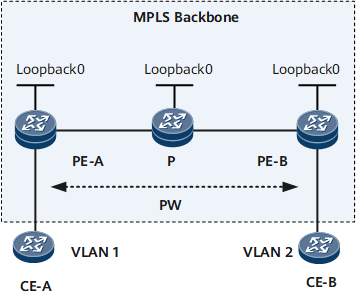LSP Ping Test
An NQA LSP ping test checks the reachability of Label Distribution Protocol (LDP) label switched paths (LSPs) and Traffic Engineering (TE) constraint-routed LSPs (CR-LSPs). Figure 1 illustrates a network on which an NQA LSP ping test is performed. The LSP ping test process is as follows:
The NQA client (PE-A) constructs a UDP MPLS Echo Request message with the destination IP field set to an IP address on the network segment 127.0.0.0/8. Then, the NQA client searches for the LDP LSP using the configured remote LSR ID and forwards the message along the LDP LSP in the MPLS domain. For a TE LSP, the message can be sent by a tunnel interface and forwarded along a specified CR-LSP.
The egress (PE-B) monitors port 3503 and replies with an MPLS Echo Reply message.
The NQA client calculates the time it takes to communicate between the NQA client and the egress by subtracting the time the NQA client received the MPLS Echo Reply message from the time the NQA client sent the MPLS Echo Request message. The data obtained is used to evaluate the MPLS network status.
